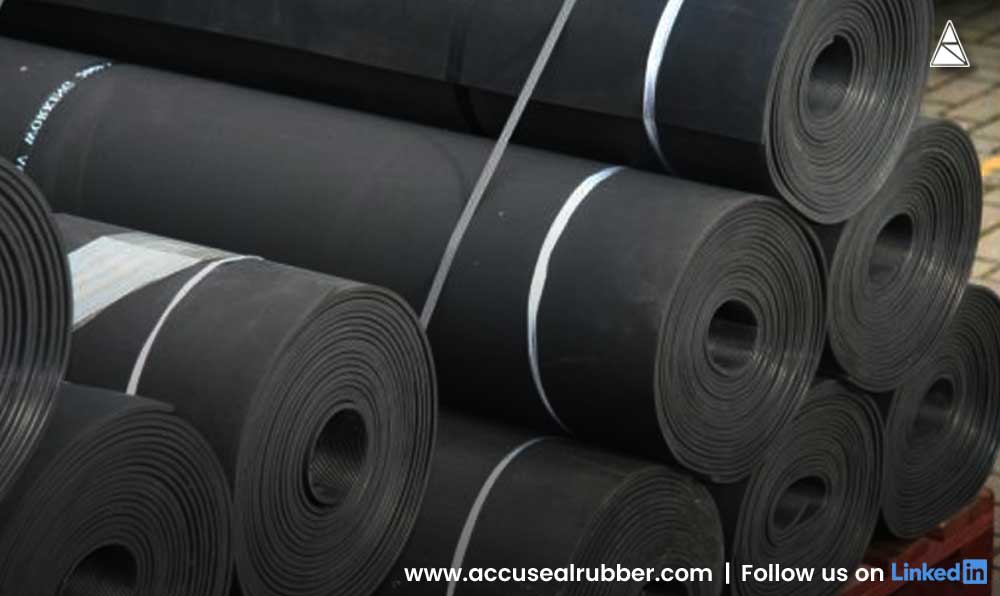“Why settle for less when your products demand superior weather resistance?” This question is crucial for industries that rely on durable, long-lasting rubber materials to withstand harsh environments. When choosing between EPDM (Ethylene Propylene Diene Monomer) and natural rubber, it’s vital to understand their unique properties, strengths, and limitations to make an informed decision.
In this article, we’ll dive deep into a comprehensive comparison of EPDM and natural rubber, helping you select the best option for weather-resistant applications.
What is EPDM Rubber?
EPDM is a synthetic rubber known for its excellent resistance to heat, ozone, and weather conditions. Composed of ethylene, propylene, and a diene component, this material is widely used in various industries due to its durability and flexibility.
Key Characteristics of EPDM Rubber
- Weather Resistance: EPDM’s standout feature is its superior ability to withstand extreme weather conditions, making it a top choice for outdoor applications.
- Temperature Tolerance: It can endure temperatures ranging from -40°C to 150°C without losing elasticity.
- Chemical Resistance: EPDM resists a wide range of chemicals, including acids, alkalis, and some solvents.
- UV and Ozone Resistance: Unlike natural rubber, EPDM doesn’t degrade when exposed to UV light or ozone.
- Flexibility: It remains flexible even in freezing conditions, preventing cracks and failures.
Common Applications of EPDM
- Automotive: Seals, hoses, and gaskets in cars.
- Construction: Roofing membranes, window seals, and waterproofing systems.
- Electrical: Insulation for wires and cables.
- HVAC: Seals and gaskets for air conditioning and heating systems.
What is Natural Rubber?
Natural rubber is harvested from the latex of rubber trees. It is prized for its elasticity, resilience, and tensile strength, making it suitable for various industrial uses.
Key Characteristics of Natural Rubber
- High Elasticity: Natural rubber offers exceptional flexibility and stretchability, allowing it to return to its original shape after deformation.
- Abrasion Resistance: It has good resistance to wear and tear, making it suitable for dynamic applications.
- Tensile Strength: Its strength-to-weight ratio is among the highest of any rubber material.
- Limited Weather Resistance: Natural rubber doesn’t fare well against UV light, ozone, or extreme temperatures, which can cause it to crack and degrade over time.
Common Applications of Natural Rubber
- Tires: Widely used in the production of automotive and aircraft tires.
- Industrial Products: Conveyor belts, hoses, and gaskets.
- Footwear: Soles of shoes and boots.
- Medical Supplies: Gloves, catheters, and tubing.
EPDM vs. Natural Rubber: A Head-to-Head Comparison
| Property | EPDM Rubber | Natural Rubber |
|---|---|---|
| Weather Resistance | Excellent; UV and ozone resistant | Poor; prone to cracking under UV exposure |
| Temperature Range | -40°C to 150°C | -50°C to 80°C |
| Elasticity | Moderate | High |
| Chemical Resistance | Good against acids and alkalis | Limited |
| Durability | Long-lasting, even in harsh conditions | Shorter lifespan in outdoor settings |
| Cost | Slightly higher due to synthetic production | Relatively lower |
Which Rubber Should You Choose for Weather-Resistant Applications?
If your application involves exposure to harsh weather, UV rays, or ozone, EPDM rubber is the clear winner. It’s engineered for resilience in outdoor environments, making it ideal for construction, automotive, and HVAC industries.
However, if elasticity and high tensile strength are more critical than weather resistance, natural rubber may be suitable for indoor or controlled environments where exposure to elements is minimal.
Use Cases Favoring EPDM
- Outdoor seals and gaskets.
- Roofing and waterproofing membranes.
- Automotive weatherstripping.
Use Cases Favoring Natural Rubber
- Industrial belts and hoses.
- Dynamic components like tires.
- Shock absorbers and vibration dampers.
Sustainability and Environmental Considerations
Natural rubber is biodegradable and renewable, sourced from tree latex. In contrast, EPDM is a synthetic product derived from petrochemicals. However, EPDM’s longer lifespan often offsets its environmental impact by reducing the frequency of replacements.
Many manufacturers are now adopting eco-friendly production methods for EPDM, including recycling and reducing emissions.
EPDM Rubber: A Long-Term Investment
When calculating the total cost of ownership, EPDM rubber’s durability and weather resistance often translate to significant savings over time. Its low maintenance and high performance in demanding environments make it a preferred choice for projects where reliability is paramount.
For industries seeking customized solutions, top-tier EPDM rubber manufacturers in the USA offer tailored products that meet stringent specifications for strength, flexibility, and weather resistance.
Accuseal Rubber Inc: Your Trusted EPDM Rubber Partner
At Accuseal Rubber Inc, we specialize in providing high-quality EPDM solutions tailored to your specific needs. As one of the leading EPDM rubber manufacturers in the USA, we pride ourselves on delivering materials that stand the test of time, ensuring optimal performance in the most challenging conditions.
Whether you need EPDM for automotive, construction, or industrial applications, our team is ready to assist you with expert guidance and premium products.
Contact us today to learn more about how we can support your next project with durable, weather-resistant EPDM solutions.
Choose the right rubber for the right job – because durability matters.

 Nick Parker
Nick Parker